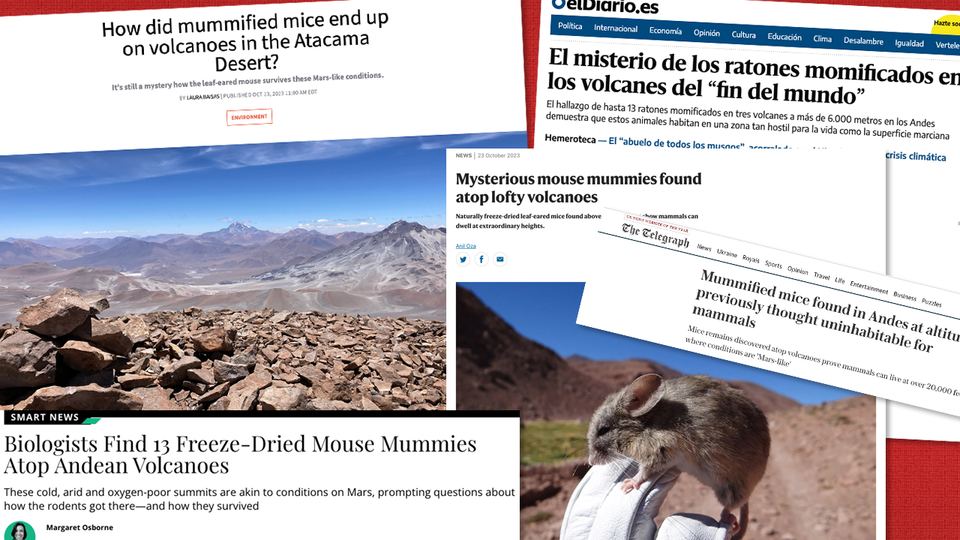· 3 min read
National, international media elevate tale of mouse mummies

Jay Storz couldn’t have planned for his discovery of skyscraping mummies — 13 of them, no less — to drop a week before Halloween. But the serendipity definitely didn’t hurt.
As with any academic awaiting the publication of findings collected months or, in this case, even years prior, the Willa Cather Professor of biological sciences could only bide his time. He hoped, of course, that others would find the revelation — a baker’s dozen of mice mummified by the elements atop 20,000-foot Andean volcanoes, a Mars-like environment that seemingly no mammal in its right mind would bother to visit, let alone live — as compelling as he did.
On the morning of Oct. 23, as the publication of the study in Current Biology officially lifted the lid on the news, a cadre of media outlets would deliver Storz and his colleagues their answer: a resounding yes. Some major science-focused sites were first: Popular Science, Scientific American, Nature and Science, among others, released stories at exactly the same time that Nebraska Today was publishing its own. Smithsonian Magazine and the Australia-based Cosmos Magazine would follow suit the next day.
General news outlets were soon joining the fray. The Telegraph, a newspaper of record in the United Kingdom, ran a story. Yahoo! News posted a piece originally published in the Miami Herald, while MSN.com repurposed an article that first appeared in Newsweek. The mouse mummies would again make their mark Down Under, finding their way into The Sydney Morning Herald and other Australian media.
Storz and several South American colleagues uncovered the mummies atop the Puna de Atacama, or Atacama Plateau, a portion of the Andes that straddles the border of Chile and Argentina. So it was small surprise that El Mercurio, a Chilean paper of record, joined Infobae — which was founded in Argentina and now ranks as one of the most-read Spanish-language outlets in the world — in writing about the research expedition. The Spain-based El Diario ran multiple pieces on the discovery, too.
To date, more than 150 outlets, from the Omaha World-Herald to the British Broadcasting Corporation, have covered the not-so-modest mice. On Oct. 26, the BBC aired an episode of “Science in Action” — a long-running radio program and podcast — featuring a six-minute interview with Storz that begins shortly after the 7:00 mark.
“It really sort of underlines that phrase, doesn’t it?” host Roland Pease said of the mountaineering rodents. “Life finds a way.”
Then, on Halloween, Storz and his fellow researchers received a treat worthy of the holiday: a story from CNN.
“Every time that we’ve found anything at those super extreme elevations,” Storz told the outlet, “we’re completely blown away.”







